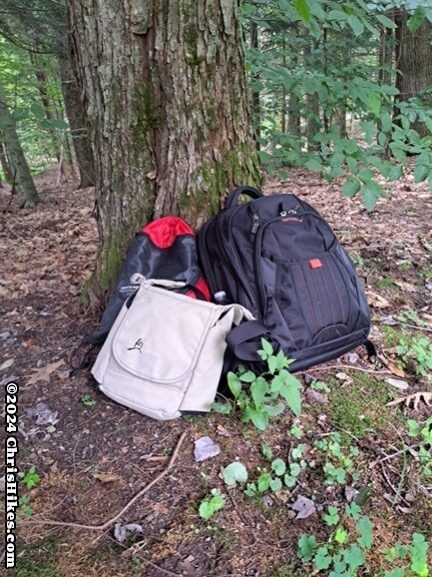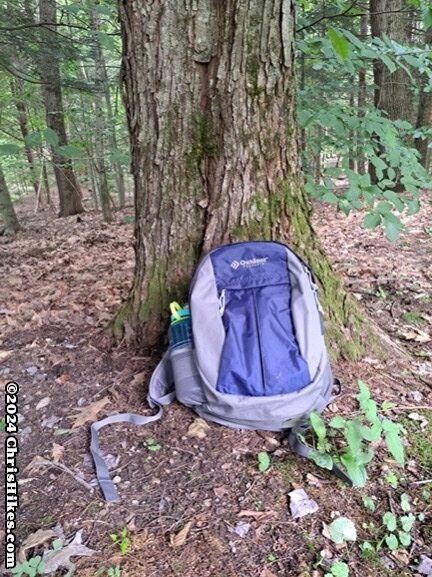To start hiking you don’t need to spend much, or any, money on a backpack. Grab what you have and head out for a short hike!
This page has tips for finding a backpack for your day hikes. Check out this page for other day hiking gear tips. See my blog posts for ideas of where to go hiking.
View my Disclaimer and General Information about Hiking.
Send me a message if you have questions about choosing a backpack.
Phase 1: Start with what you have

For your first few hikes use a bag you already have or buy an inexpensive bag. I’m assuming your first few hikes are relatively short (under 3 miles, 4 hours or less) and you are not carrying much gear. Use a drawstring backpack, a computer backpack (without the computer!), or a crossbody bag. Any bag you have is good enough as long as you can fit a water bottle, a snack, and possibly a jacket.
Phase 2: Buy a cheap hiking backpack

Once you have gone on a few hikes and know you want to keep hiking it makes sense to buy a backpack that is designed for hiking. An inexpensive backpack is good enough at this point, and may be all you ever need. I bought an Outdoor Products backpack at Walmart as my first hiking backpack and used it regularly for over two years! It is still in good condition (even after a spin through the washing machine) and I still occasionally use it on short hikes.
The typical size for a day hiking pack is 20 to 30 liters. I think the size and amount of your clothes is a major factor in how large of a pack to buy. A small volume pack is good if you are a smaller person and/or will be hiking mostly in warm weather. And if you are a larger person and/or will be hiking in colder weather, choose a larger pack.
Phase 3: Upgrade to a fancier hiking backpack

A good time to consider buying a more expensive pack is after you have been hiking for a year or two or when you start going on hikes that last all day. At this point, you have some experience and have ideas of what features you would like in a backpack. I have two big issues with my cheap backpack: my back gets sweaty and it doesn’t have a waist belt. The purpose of the waist belt is to distribute the weight of the pack to your hips. Even when I’m not carrying a lot of weight I like a pack with a waist belt because it keeps the pack from sliding up and hitting my head when I scramble on ADK High Peaks trails.
I have two hiking-specific day packs: an Osprey Tempest 24-liter (men’s fit version is the Talon 26-liter) and a Gregory Jade 38-liter. The features I like in these hiking day packs are attachments for trekking poles (technically these are ice ax attachments), an outer stuff pocket, a waist belt with storage pockets, and a back that provides good airflow. I use the 25-liter pack in the summer and for short hikes in the winter. The 38-liter pack is good for very long day hikes in the summer and for most of my winter hikes.
Be a smart shopper
There are a lot of hiking backpacks to choose from. In addition to Osprey and Gregory, other popular brands are Deuter and REI. Many of these packs come in different sizes to better fit different torso lengths. Some of the packs have an adjustable torso length, but the adjustment is within a limited range. There are also packs specifically designed for women that have more curvature in the straps. Going to a store where you can try on backpacks or ordering from a store with a generous return policy is a good way to figure out the size and fit that works best for your body. Make sure to put the typical amount of weight you carry into the pack when you try it on! Many of these packs cost $100 to $200 or more, so it is a good idea to make sure the pack you buy fits you well and is one you will be happy using for a long time.
Check out tips on other types of gear for day hikes and see my blog posts for trip reports.
Do you have more questions about choosing a backpack? Send me a message!